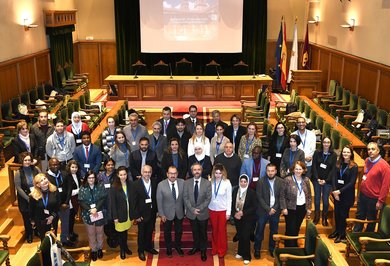
Exchange of students and staff
Sustainable mobilities
During the period from 2014 to 2020, the participation of higher education staff in the Erasmus+ programme increased and reached 800,000. With the anticipated increase in travel during the new Erasmus+ period (2021–2027), environmental and climate goals have become priorities for the programme.
Below, we provide information and tools to help you visualize the environmental impact of your mobility and offer recommendations on good practices to make your travel more sustainable.
Erasmus+ Green Top-Up: Green travel is defined as travel that uses low-emission means of transport for the main part of the journey, such as buses, trains, bikes, or car-pooling. Students who travel to their mobility destination using a sustainable mode of transportation may be eligible for a bonus grant. To qualify for the top-up, you must have traveled most of the way to and from your destination country sustainably. Check with your local Erasmus+ contact person about the availability of funds and eligibility.
Understanding the transport-related carbon footprint of your mobility might be the first step in changing habits and exploring alternatives to minimize it. Developed by the Erasmus Goes Green consortium, the CO2 Visualization Tool helps you become more aware of the carbon footprint of your mobility.
This handbook includes key facts on transport-related CO2 emissions and guidelines on using and benefiting from the CO2 Visualization Tool. It offers concrete support when planning a more sustainable journey and contains examples and feedback from students who traveled sustainably. You can add it to the documentation shared on your website or disseminate it among your students before the mobility period.
Equipped with educational content, games, and a quiz, this resource helps students understand the necessary efforts to undertake before, during, and after their mobility abroad to make it more sustainable.
